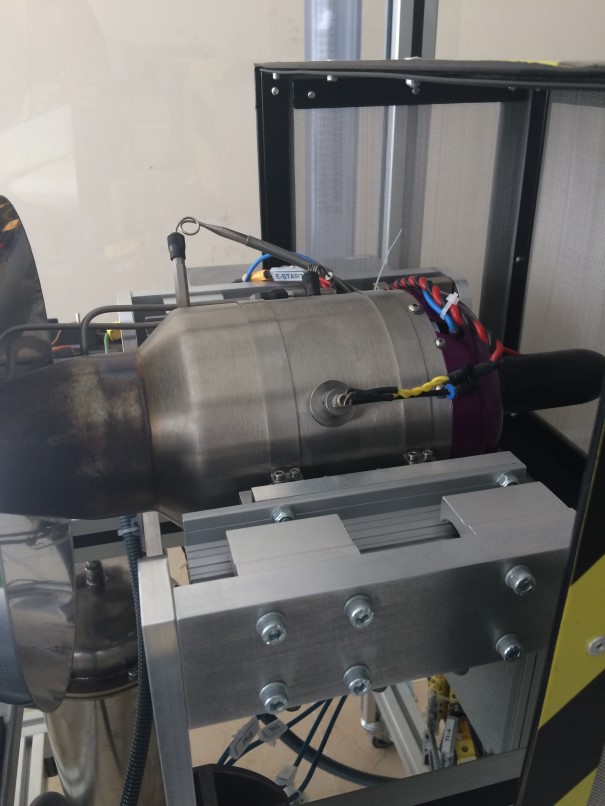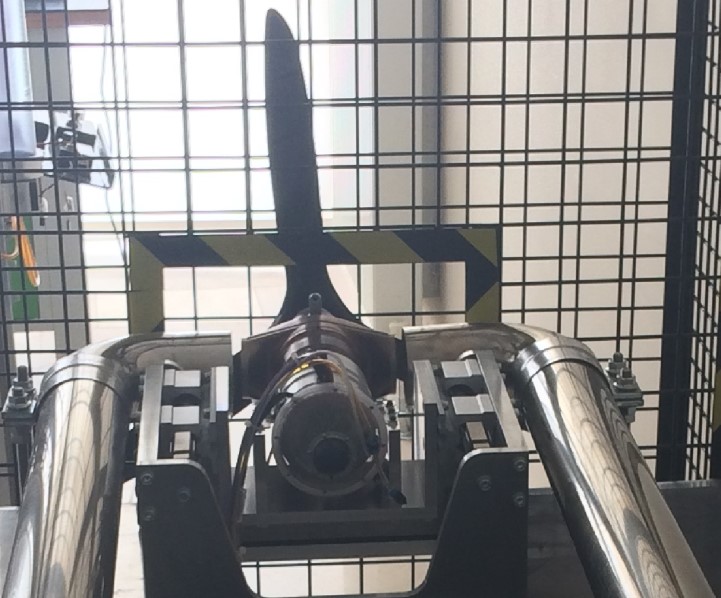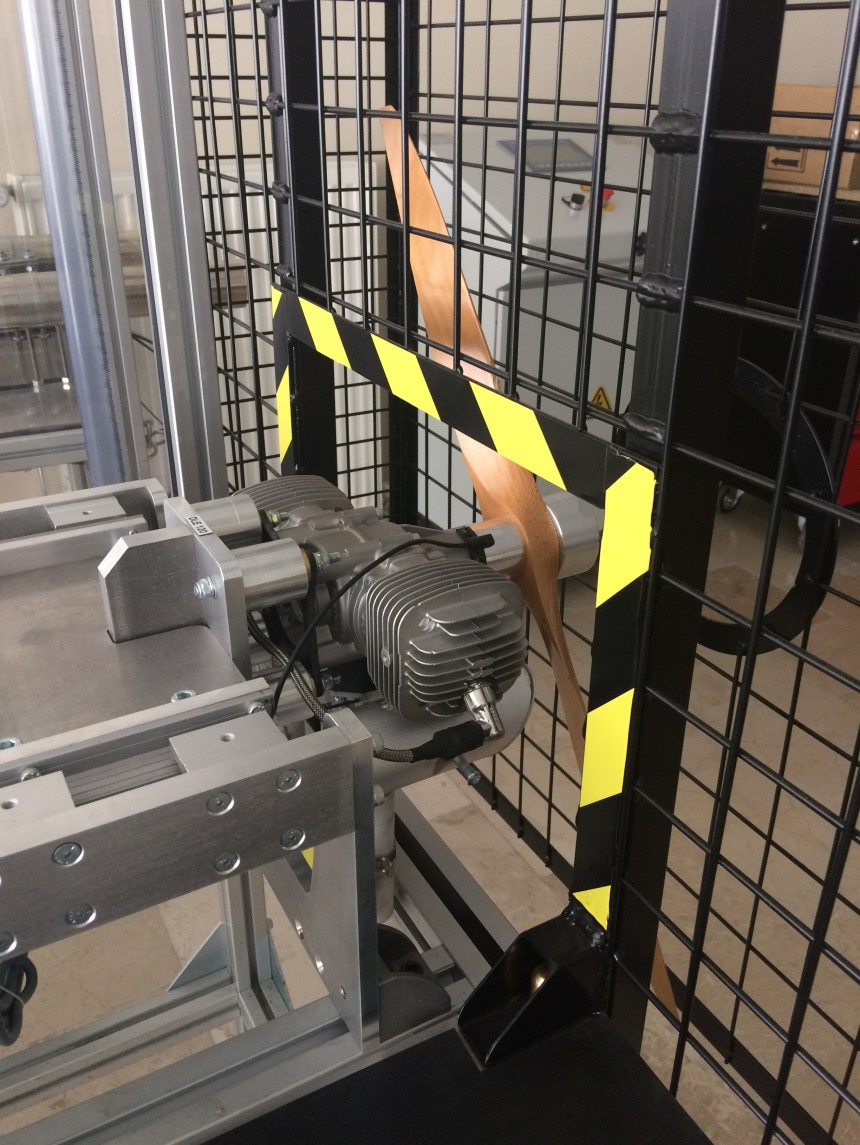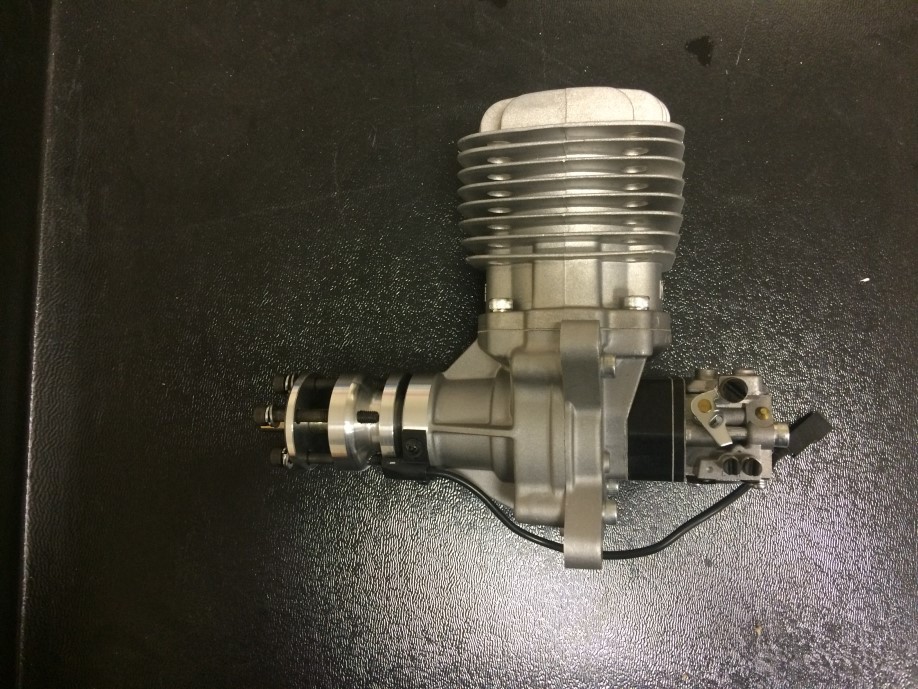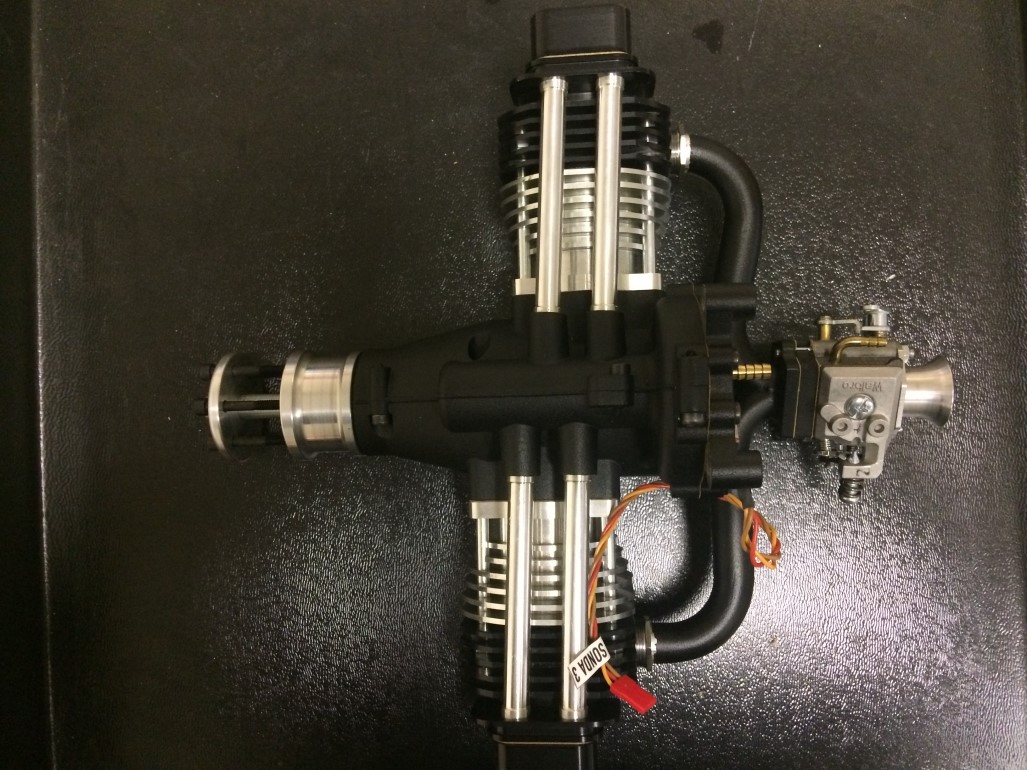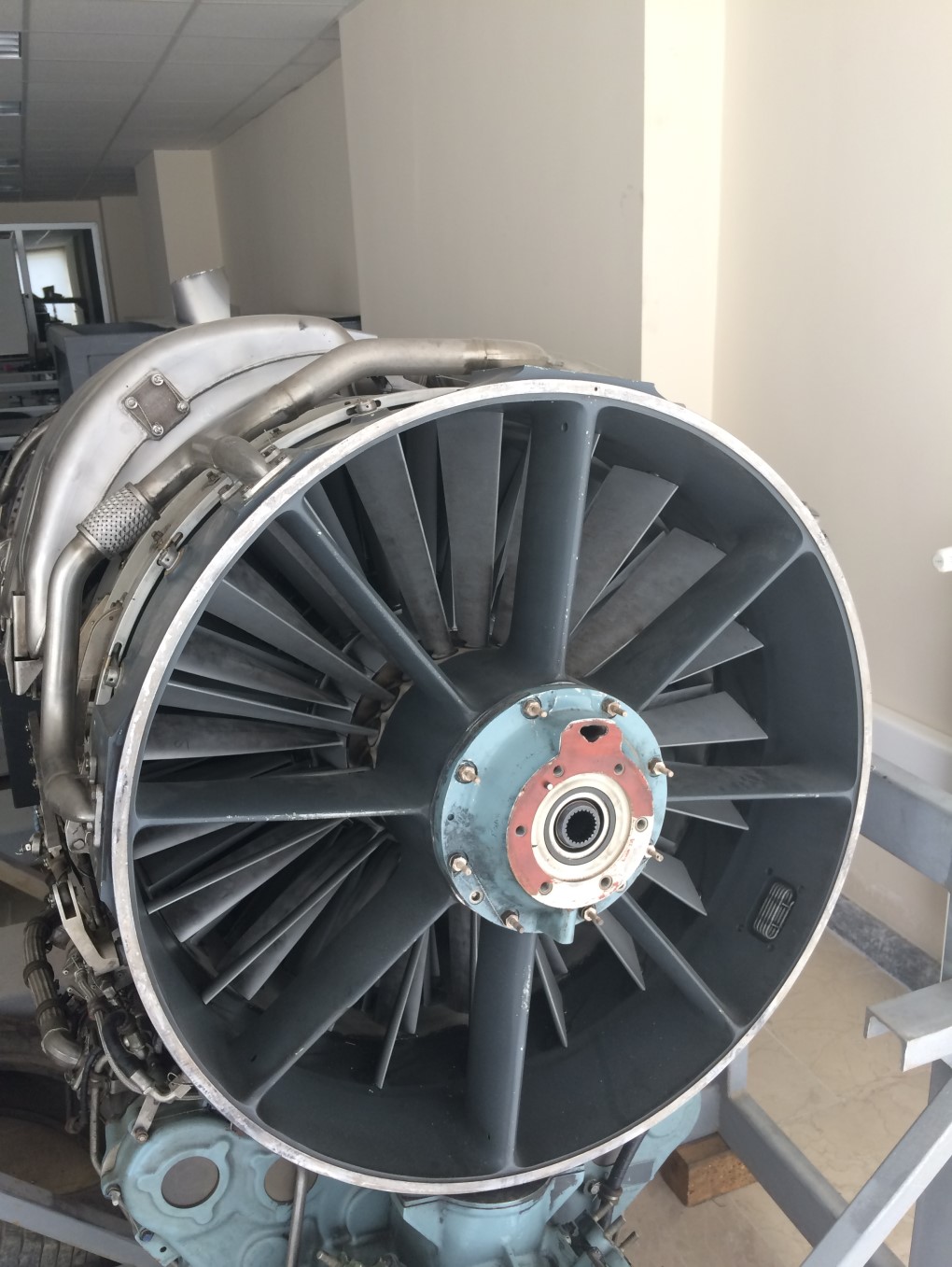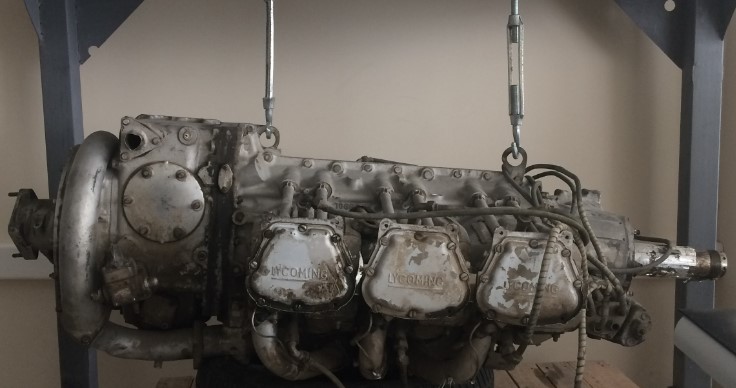Airframe and Engine Laboratories
1) Turbo jet Engine test set up
|
|
The turbo jet engine test set up is based upon the university version of the commercially available AMT Olympus HP turbo jet engine. The turbo jet testing set up is designed and manufactured in house and is composed of a specially designed test stand and the conrol unit used to collect, display and interface data from various engine units, such as the turbo prop and internal combustion engines. AMT Olympus HP turbo jet engine produces 230 Newtons of thrust. The set up is designed to measure the axial thrust, rpm, pressure and temperatures at various locations on the engine such as at the inlet and exit of the radial compressor and at the exhaust of the turbine nozzle. The engine is started by means of a electrical motor until the required speed is reached and then combustion is started to burn jet A1 fuel. The fuel consumption is measured by means of timing a certain amount of fuel through a graduated tube filled with fuel. The engine set up is portable and can easily be moved outside the laboratory during live runs. |
2) Turbo prop engine set up
|
|
The turbo-prop engine test set up is a replica of the turbo jet test stand having basically the same dimensions as the turbo jet engine except instead of a turbo jet engine this time a turo prop engine is used. Similar to the turbo jet engine test set-up, the system is composed of a JetCat Spt -5 turbo prop engine, the engine set up and the control unit. The engine drives a 27” three blade propeller at 7000 rpm and delivers a maximum thrust of 55 lb. The engine can operate between 50 000 – 165 000 rpm and 580 – 7100 C temperature ranges. The total length of the engine is 15.25 “ and weighs 4.8 lb. The engine consumes approxiamtely 8 ounces of Jet A1 fuel per minute and has a life span of 25 hours. To protect the system the propeller system is placed inside a wire cage and the hot exhaust gases are discharged by means of two insulated exhaust pipes. Again the engine is instrumented to measure various performence parameters such as pressures, temperatures, thrust, rpm and fuel consumption. Students gain experiences to investgate the various features of a turbo prop engine and run the experiments by following the processus and check list outlined for its operation. |
3) Piston Engine Set-up
|
|
The piston engine set-up is based on the DLE-120, 120 cm3 displaced volume piston engine, the engine set-up and the same common control unit as used in the previous two turbo jet engine facilities. The DLE-120 engine is a compact 2 stroke, two opposed (boxer type) cylinders engine delivering approximately 50 lb of static thrust with the 25 inch two bladed wooden propeller. The fact that the engine is an opposed 2 cylinder engine makes its vibration level very low and improves its efficiency. The engine produces very high power to weight ratio and exhibits high compression ratio, and good accelaration characteristics with rather long life span. Th engine has a single carburator and has electronic ignition system. The total weight of the engine is 2.895 kg and produces 12 HP at 7500 rpm. |
4) DLE-61
|
|
This engine is mainly used for practical training of our students. During dismantling and assembling the components of this engine, our students familarize with the Turkish and English names of these parts and improve their practical skills. The specifications of DLE-61 engine are as follows: Displacement 60cc 3.66 cu in; Performance: 6hp at7500 RPM. The engine has carburetor and electronic ignition systems. The operating fuel is 87 – 93 Octane gasoline with oil mixture. |
5) ROTO 85 FSI
|
|
ROTO 85 FSI is a two cylinder, opposed (boxer configuration, 4 stroke gasoline engine used specifically for powering model airplanes up to 3.6 m (11.8’) and 20 kg (44,2 lb). Basic technical data for the engine is as follows: Displaced volume: 85 ccm; Static Engine Thrust: 12 kg; Weight: 3kg; rpm: 1000 – 5800 |
6) J-79 Turbo jet Engine
|
|
In addition to functional miniature lab scale turbo jet and turbo prop engine facilities, our laboratory also has a J-79 engine which is used basically for demonstration purposes. The students observe on this engine all the components of a real old generation turbo jet engine. |
7) Lycoming aircraft internal combustion engine
|
|
This is a old 6 cylinder, opposed (boxer type) engine not in working condition but is used mainly for demonstration purposes. The engine is dismantled completeley and then assembled by our students during their summer training period as part of their practical trainings. |


